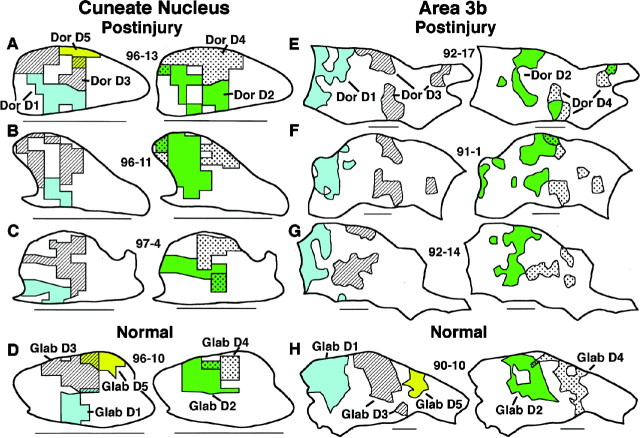Fig. 9.
Somatotopic organization of digit representations in the CN (A–D) and area 3b (E–H). A–C,Shading and labeling of areas in three postinjury CN maps indicate postinjury representations of dorsal digits (Dor D) 1, 3, and, where seen, 5 in the first column, and of dorsal digits2 and 4 in the second column. Note (1) the partially shifted and overlapping locations of these representations from D1 lateroventrally toD5 (or 4) mediodorsally and (2) their rough in-register relation to normal glabrous digit representations (D). E–G,Shading and labeling of areas in three postinjury area 3b maps indicate postinjury representations of dorsal digits 1 and 3 in the third column and2 and 4 in the fourth column. Note that, similar to the CN, postinjury area 3b representations of dorsal digits occupied areas that were partially shifted and overlapping fromD1 laterally to D4 medially and were in rough register with normal glabrous digit representations (H). For CN maps, dorsal =up and medial = right. Scale bar, 1 mm. For area 3b maps, anterior = up and medial = right. Scale bar, 1 mm.

